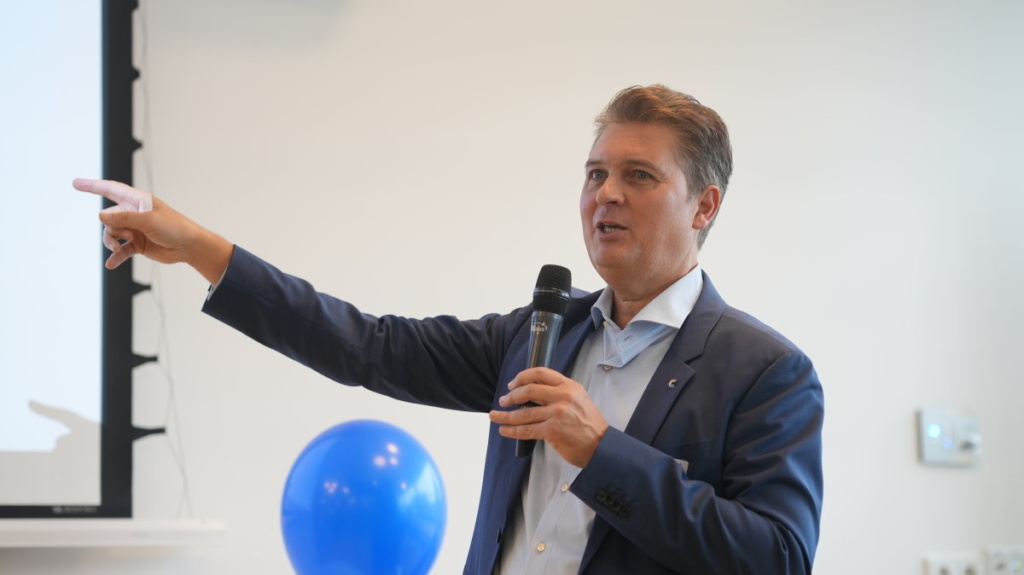Your cart is currently empty!

Wolfspeed in rough waters, European rivals stay the course
While their American competitor threatens to collapse, Infineon and STMicroelectronics stay the course with a diversified product portfolio and their China-for-China strategies.
Wolfspeed, a pioneer in the silicon carbide chip market, threatens to buckle under its debts. The American company has already been under Chapter 11 bankruptcy protection for more than three weeks. If it collapses, the US loses a strategic position in the market for power chips for electric vehicles and energy conversion.
Located on Silicon Drive in Durham, North Carolina, Wolfspeed isn’t well known in Europe. In amplifiers and other silicon carbide-based chips, however, it’s larger than Infineon and STMicroelectronics. SiC is crucial for producing energy-efficient drivetrains for electric vehicles, among other applications.
Complex process
Wolfspeed is heavily vertically integrated. Besides producing power chips, it also masters the difficult SiC wafer fabrication process. Infineon and STM signed agreements with their American counterpart in recent years to secure the supply of 200mm SiC wafers. Japanese companies Renesas and Rohm have also made themselves dependent on the American supply of such wafers.
The strategic choice to integrate vertically was made early on. Wolfspeed also fabricates other types of power ICs based on GaN on silicon wafers, primarily for RF applications. In recent years, however, it has primarily invested in acquiring a strong position in the SiC power chip market.
In doing so, Wolfspeed focused not only on producing the circuits but also on mastering the complex production process for the SiC base material and wafers. It fabricates the so-called ingots itself – single-crystal rods from which the thin SiC wafers are sawn and on which the power chips are subsequently made.
SiC chips are often still made on 150mm wafers. In Europe, Bosch, Infineon and STM are currently setting up and scaling their 200mm SiC processes. Wolfspeed has been a leader in recent years in processes to produce wafers with diameters of 200 mm. For SiC, this is somewhat more difficult than for silicon, where ingots with a diameter of 300 mm are pulled from the melt at temperatures between 1,400 and 2,000 degrees Celsius.
In the case of SiC, the crystal sublimates from the gas phase at temperatures of 2,027-2,227 degrees. The difficulty is obtaining single-crystal material without lattice defects, as these can later disrupt the electrical behavior of the components. To prevent this, a very high degree of purity and exact ratio between silicon and carbon is needed – the latter makes it extra challenging.
Vulnerable
According to Trendforce, Wolfspeed was the market leader in SiC substrates in 2024 with just over a third (33.7 percent). The market researcher says Chinese rivals Tankeblue and SICC are rapidly gaining ground. They had market shares of 17.3 and 17.1 percent, respectively, of the total SiC substrate market last year, occupying second and third place.
Wolfspeed’s rapid growth in SiC brought sky-high investments. Private equity firm Apollo invested 1.25 billion dollars in the company in 2023. Additionally, Renesas Electronics provided a 2-billion-dollar advance two years ago to secure the supply of 200mm wafers for the next ten years. Another Japanese company, Rohm, also has long-term agreements with the Americans for SiC wafer supply.
Nonetheless, Wolfspeed remained vulnerable. This became apparent two years ago when Elon Musk announced he would use less SiC in his electric cars. Wolfspeed’s stock price immediately took a significant hit.
With the demand for electric cars declining and Chinese chipmakers increasing their production thanks to generous government subsidies, market conditions have become even more difficult. Business newspaper Nikkei Asia quoted a sales director from a German chip equipment manufacturer last February who said some Chinese suppliers are asking only 500 dollars for a 150mm SiC wafer. “Just two years ago, a standard 6-inch SiC wafer from market leader Wolfspeed cost 1,500 dollars,” he told the Japanese outlet.
The price pressure translated into a worldwide 9 percent revenue decline in the SiC substrate market last year. Long-term demand remains strong, however, says Trendforce, “because the 8-inch roadmap is gaining momentum.”
Last May, Nikkei Asia reported that Renesas is throwing in the towel. It’s not proceeding with its plans for SiC power chip production at its factory in Takasaki. The Japanese company cited market conditions for SiC chips for electric vehicles as the reason, which have deteriorated significantly. It concluded it’s difficult to even break even in the SiC market, according to Nikkei. In February, Renesas CEO Hidetoshi Shibata had already called market conditions “extremely severe.”
China-for-China
For now, European players aren’t disturbed. They may be benefiting from customers shifting orders from the US to Europe. CEO Jean-Marc Chery emphasized during the discussion of recent quarterly results that STM continues to fully commit to shifting SiC production from 150mm to 200mm wafers. The company is pursuing a China-for-China strategy, setting up a 200mm SiC fab through a joint venture with Sanan that, according to Chery, will be ready for mass production by the end of this year.
Besides SiC, STM is also investing in GaN, another semiconductor material for power chips. For this, the Franco-Italian chip company has a strategic partnership with China’s Innoscience, which has the largest production facility for GaN chips on Si wafers.
Infineon, too, is focusing on a power IC product mix of Si, SiC and GaN. CEO Jochen Hanebeck said during the recent quarterly results discussion that his company’s revenue in the Chinese automotive market doubled in the past quarter compared to a year earlier. The German chip manufacturer has its power modules assembled in Shanghai by SAIC Infineon Automotive Power Modules, a joint venture with SAIC Motor. Additionally, it collaborates with SICC and Tankeblue Semiconductor in the SiC field.
Top image credit: Wolfspeed


